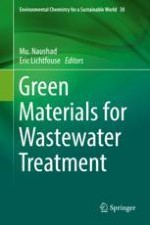2020 | OriginalPaper | Buchkapitel
9. Research Updates on Heavy Metal Phytoremediation: Enhancements, Efficient Post-harvesting Strategies and Economic Opportunities
verfasst von : S. Muthusaravanan, N. Sivarajasekar, J. S. Vivek, S. Vasudha Priyadharshini, T. Paramasivan, Nirajan Dhakal, Mu. Naushad
Erschienen in: Green Materials for Wastewater Treatment
Aktivieren Sie unsere intelligente Suche, um passende Fachinhalte oder Patente zu finden.
Wählen Sie Textabschnitte aus um mit Künstlicher Intelligenz passenden Patente zu finden. powered by
Markieren Sie Textabschnitte, um KI-gestützt weitere passende Inhalte zu finden. powered by
